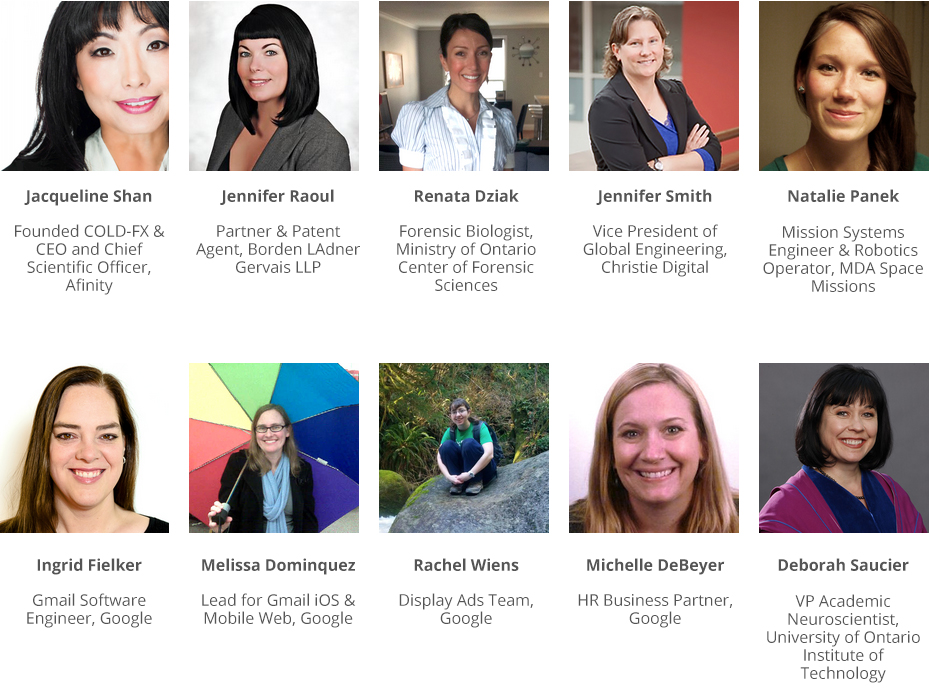Share
STEM consists of fields involving the science, technology, engineering and math. STEM occupations are necessary in leading and assisting societies with resources and innovation. According to Million Women Mentors, women have been, and currently are, underrepresented in fields of STEM. There are a variety of suggestions that could possibly explain the reasoning behind this including; gendered interactions with teachers and parents (as well as lack of encouragement from both), stereotypes and structural settings, territorial segregation, strength on spatial skills, ‘leaky pipelines’ (when women drop out at different stages in school or career path), as a result of declining female interest and supports available.
Studies show that there is a lot of work available in STEM fields and that the demand for jobs in STEM fields continue to increase. This could be due to the absence of female friendly policies and programs, the lack of acceptance for females in authority or mentors available, as well as less family-friendly flexibility in the field. STEM earners, earn more than their counterparts, though male STEM earners receive more pay than respective and equally qualified females in their field. There needs to be equal access to education and jobs on a global scale in order to promote entry and success of females in STEM occupations. Though faced with significant barriers, women are vital for technology success to be on boards, founders and directors so we need to get more women to the top by cultivating women with potential.
The only way to challenge stereotypes is to eliminate them and push for policies that protect women, as well as continuing the pursuit of equal rights, equal pay, and gender equality in the workplace. There needs to be access to a platform of connections, opportunities, and resources including the support of other women in similar positions. A combination of the prior mentions would empower women to unimagined possibilities.
In order to change the low number of women in STEM-related occupations, society as a whole needs to work together to close the gender gap. STEM careers must be introduced in the curriculum within the education system, to attract youth from a younger age. In order to engage them in technology and innovation, we must boost their confidence in these areas of study and encourage them to lead the way. There must be successful female role models available to offer support to challenge and inspire young women.
Canada can lead the way and set an international example of leadership in equality and equal pay for women. We should embrace the opportunity to support female in STEM careers and leadership positions, as it would serve our boards, our workplaces, and our country well.
In 2014 Mad Hatter Technology hosted the Curieosity Student Leadership Conference, as a celebration of women leading careers in science, technology, engineering, and math. The day was dedicated to inspiration as women shared ideas, insights and personal stories to help mentor, build confidence and curieosity in the next generation of young women. We were proud to have women from STEM backgrounds participate in the conference.
In the interest of encouraging engagement and mentorship in STEM, Mad Hatter Technology was honoured to host the following guests at the Curieosity Event.

STEM consists of fields involving the science, technology, engineering and math. STEM occupations are necessary in leading and assisting societies with resources and innovation. According to Million Women Mentors, women have been, and currently are, underrepresented in fields of STEM. There are a variety of suggestions that could possibly explain the reasoning behind this including; gendered interactions with teachers and parents (as well as lack of encouragement from both), stereotypes and structural settings, territorial segregation, strength on spatial skills, ‘leaky pipelines’ (when women drop out at different stages in school or career path), as a result of declining female interest and supports available.
Studies show that there is a lot of work available in STEM fields and that the demand for jobs in STEM fields continue to increase. This could be due to the absence of female friendly policies and programs, the lack of acceptance for females in authority or mentors available, as well as less family-friendly flexibility in the field. STEM earners, earn more than their counterparts, though male STEM earners receive more pay than respective and equally qualified females in their field. There needs to be equal access to education and jobs on a global scale in order to promote entry and success of females in STEM occupations. Though faced with significant barriers, women are vital for technology success to be on boards, founders and directors so we need to get more women to the top by cultivating women with potential.
The only way to challenge stereotypes is to eliminate them and push for policies that protect women, as well as continuing the pursuit of equal rights, equal pay, and gender equality in the workplace. There needs to be access to a platform of connections, opportunities and resources including the support of other women in similar positions. A combination of the prior mentions would empower women to unimagined possibilities.
In order to change the low number of women in STEM related occupations, society as a whole needs to work together to close the gender gap. STEM careers must be introduced in the curriculum within the education system, to attract youth from a younger age. In order to engage them in technology and innovation, we must boost their confidence in these areas of study and encourage them to lead the way. There must be successful female role models available to offer support to challenge and inspire young women.
Canada can lead the way, and set an international example of leadership in equality and equal pay for women. We should embrace the opportunity to support female in STEM careers and leadership positions, as it would serve our boards, our workplaces and our country well.


